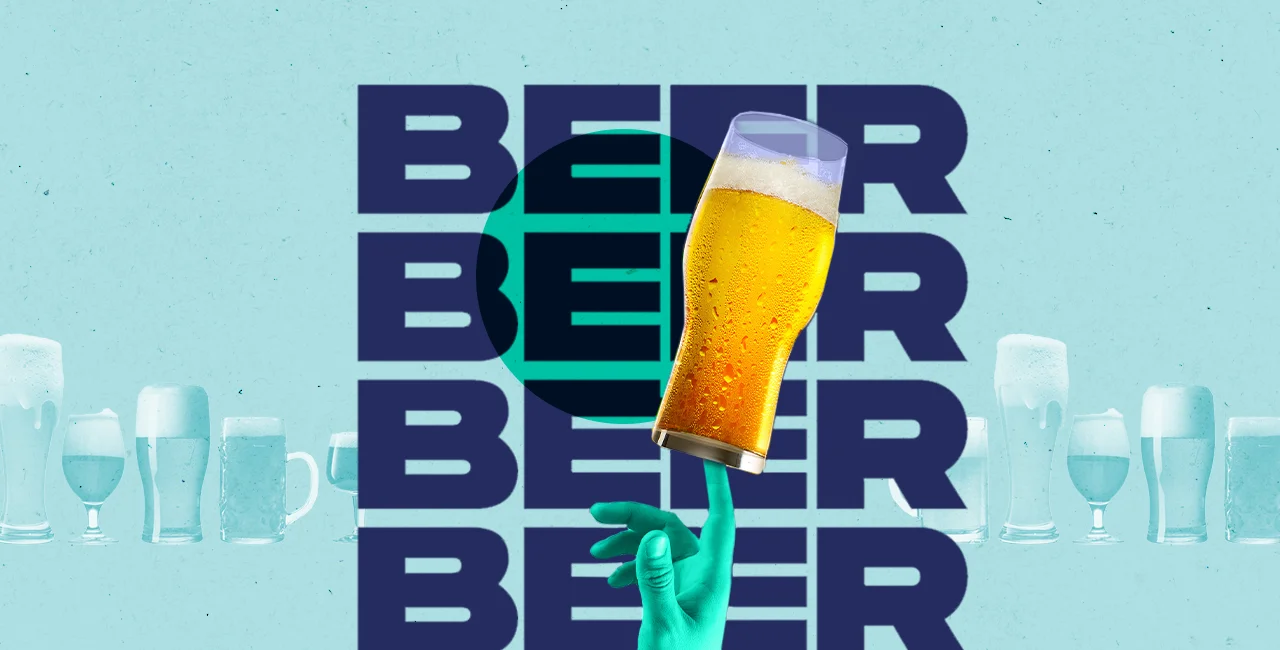Czechia's enduring love affair with beer is deeply ingrained in its heritage and culture. The country boasts the highest beer consumption per capita globally, with 2022 figures revealing an astounding average of 136 liters of beer consumed per person – a six-liter increase from the previous year.
Furthermore, Czech breweries have been ramping up production, reaching 20.55 million hectoliters in the last year alone. As the nation celebrates this cherished beverage, it raises questions about the future of Czech beer and its evolving trends.
Are Czechs leaning towards particular beer types? Is the demand for non-alcoholic beer rising? How has the shift between home and restaurant consumption impacted the beer industry in the past decade? These factors play a pivotal role in shaping the future of Czech beer, an integral part of the nation's identity and a cherished tradition for generations.
We spoke with two experts in the field of Czech beer – Tereza Pospíšilová general manager of the Pult beer bar and Miroslav Nekolný, head bartender at Červený Jelen Restaurant – to find the answers to these questions, which play a pivotal role in shaping the future of Czech beer.
Lager still rules but sours and gose are on the rise
In terms of Czechia's most-ordered beer Pospíšilová, told us: “Lager rules in Czechia.” When asked to elaborate on a beer that “defines the Czech nation” Nekolný concurs that “lager of the Pilsner type” is by far the most popular beer in Czechia.
“Due to its lower fermentation, the beer is very drinkable, combining sweetness from residual sugars with a distinct bitterness provided by high-quality Czech hops,” Nekolný said.
This was echoed by Pult's Pospíšilová, who said, “Czechia’s starter beer is obvious..it should always be Plzeňský Prazdroj...definitely some good twelve, perfectly poured, for the full experience.“

She added that sours and gose, a warm fermented beer that originated in Goslar, Germany, are also increasingly popular among Czech beer drinkers.
Pub culture may be in decline, but it's not in danger
Pilsner may be king but consumption of draught beer, which comprises 44 percent of total production in Czechia, is seeing a sharp decline; sales in pubs are at their lowest level in decades.
While in 2009 almost half of all beer in Czechia was consumed in pubs and restaurants, last year it was just 31 percent. Rising prices in restaurants and pubs are the main culprti – in 2022, the average price of a pint of draught beer was CZK 52, whereas in 2013 it was CZK 21.5.
Nekolný told Expats.cz that the decline in draught beer’s popularity is also a “remnant of the pandemic when people couldn't gather in pubs."
Fear not, fans of Czech pub culture. Nekolný said that while the growing preference of the younger generation to opt for low-alcohol or non-alcoholic beers has added up to lower draft beer consumption, going to the pub remains an intrinsic part of Czech culture, and will not be eradicated any time soon.

Pospíšilová wholeheartedly agrees. "I'm not sure pub culture will ever disappear. It's kind of in us as a nation. I think what people are more likely going to look at is getting the quality and taste for the money."
Next-gen trends? Bold flavors, craft brews, and low-alcoholic varieties
The popularity of non-alcoholic beer has rocketed in recent years, said Pospíšilová. "I feel like in the last two or three years the popularity of non-alcoholic beer has been growing. And thank goodness the breweries are responding with more and more great non-alcoholic beers being created."
Another trend spotted by Nekolný is the rise of craft breweries which he said are increasing numbers across Czechia, "mainly due to the growing interest of the younger generation in trying different flavors and beer styles.”
He notes that the breweries are also experimenting with top-fermented beers like wheat beer and porter. “Different tastes and flavors are becoming more important, with sour and fruity craft beers gaining popularity among the younger crowd,” he adds.
Pospíšilová agreed: “Lately, there are a lot of experimental hops being brewed by more and more breweries. NOZIB, for example, is worth mentioning. The Sibeeria Brewery has a lot of foreign collaborations that make great beers.” She added that even larger companies are acknowledging the value of small-batch brewing.
Tereza Pospíšilová, Pult"Czechs are less and less afraid to experiment with top-fermented beers. They're not afraid of stronger hops, of completely new flavors"
“Budějovický Budvar and their brewer Aleš Dvořák are touring the Czech Republic and brewing joint beers with smaller breweries. Great beers are made here, too.“
More women in breweries and behind taps
As the first woman ever to win the Golden Pipe, a competition in which bartenders at Ambiente pubs, as well as other select restaurants, are evaluated on their pouring skills, Pospíšilová said that women belong in the taproom.
“Half of our staff at Pult is also made up of women. It's a little more difficult for them to tap from kegs, but they manage it great. It's part of the job.”
Currently, women make up around 20 percent of brewers, according to the head of PROUD Brewery Lenka Straková, which earlier this year inaugurated a new professional association, the country's first Pink Boots Society, an educational program designed to encourage women in the profession.
On the topic of the male-dominated Czech brewing industry, Nekolný opined: “I dare say that female brewers are more adept at the craft.” He hopes for many more women to enter the industry in the coming years.
Czechs and beer by the numbers
- Czechs are drinking less compared to several years ago. In 2009, Czechs drank 153 liters of beer per capita, and in 2013 this figure was 144. In 2021, Czech beer consumption reached its fifth-lowest level since the 1950s.
- Eight in 10 Czechs drink beer "at least occasionally" and 13 percent of adults in Czechia drink daily, down by 6 percentage points from two years ago. One in three people drink beer "at least once a week."
- Czechia has the highest beer consumption per capita globally. In 2022, the average person in the country drank 136 liters of beer, six liters more than in 2021.
- Czech breweries increased their production in 2022, reaching 20.55 million hectoliters, an increase of 950,000 hectoliters compared to the previous year.
- Plzeňský Prazdroj, the most popular brewery in Czechia, sold 7.3 million hectoliters of beer in the Czech Republic in the last year, almost 12 percent more than in 2021.
- Non-alcoholic beer's domestic market share has doubled in the past six years, now standing at around 7 perecent. In 2022, sales of non-alcoholic beer grew by an incredible 47 percent year-on-year and this upward trend is expected to continue.
- Birell, which has almost zero alcohol, was chosen last year as Czechia’s favorite brand of beer. According to a survey, 17 percent of people in Czehia voted for it, pipping Pilsner Urquell beer, which received 16 percent.
Sources: Czech Association of Breweries and Malthouses, 2022 study; Nielsen Admosphere; Alkoholdrink.cz; Pivniweb.cz.












 Reading time: 5 minutes
Reading time: 5 minutes 


































